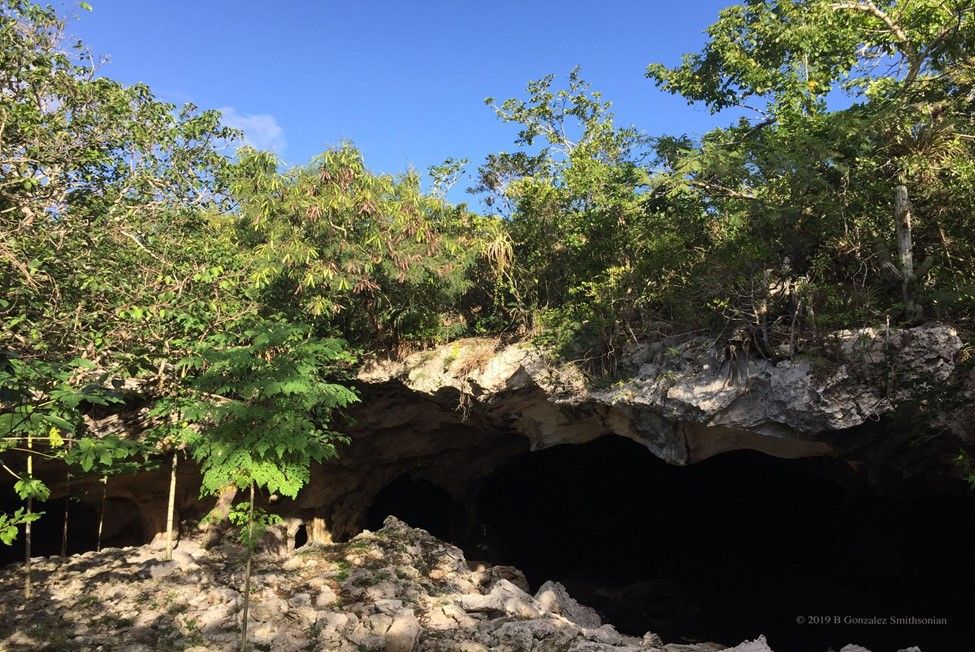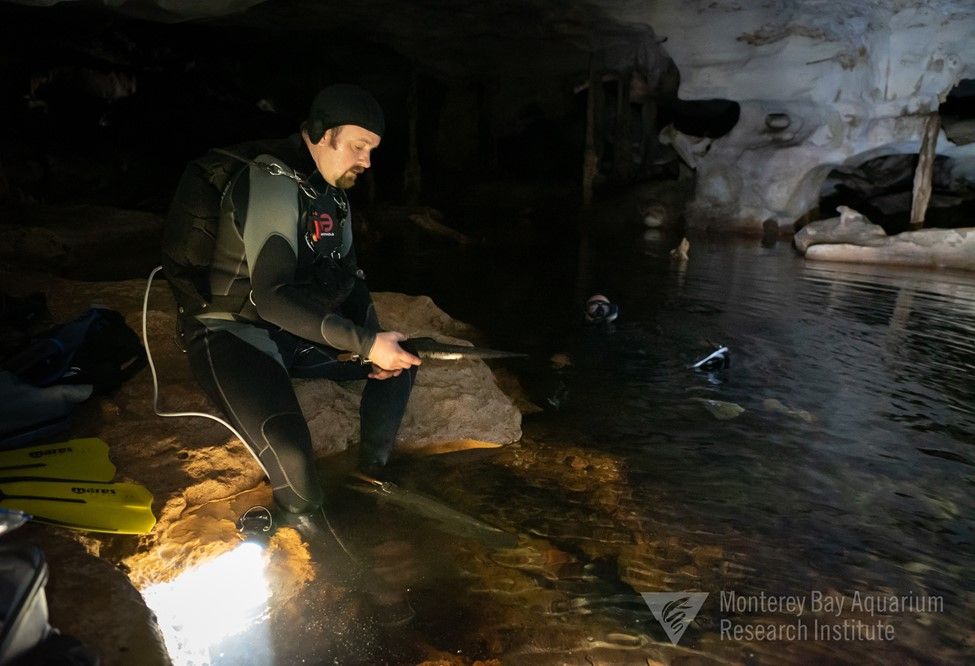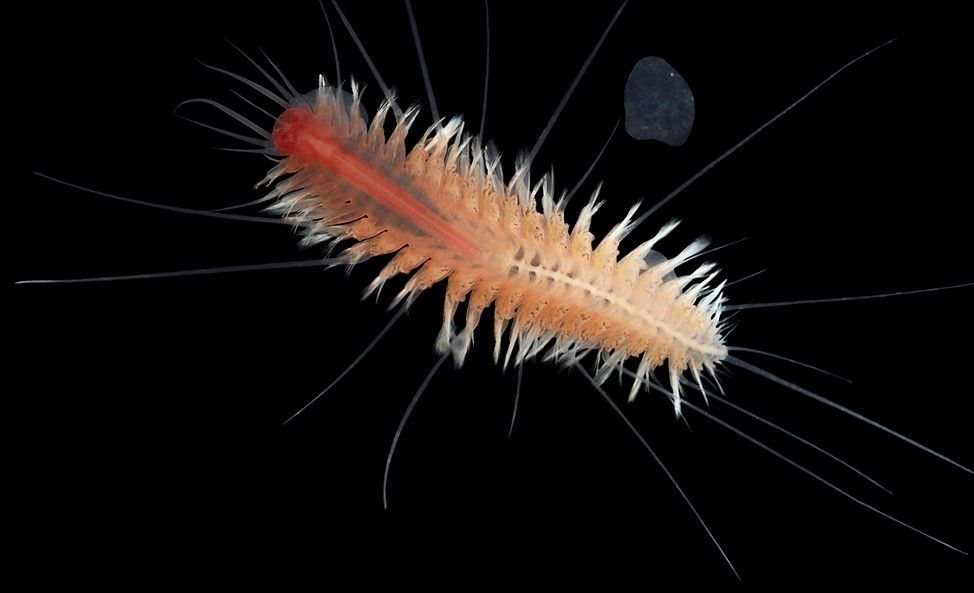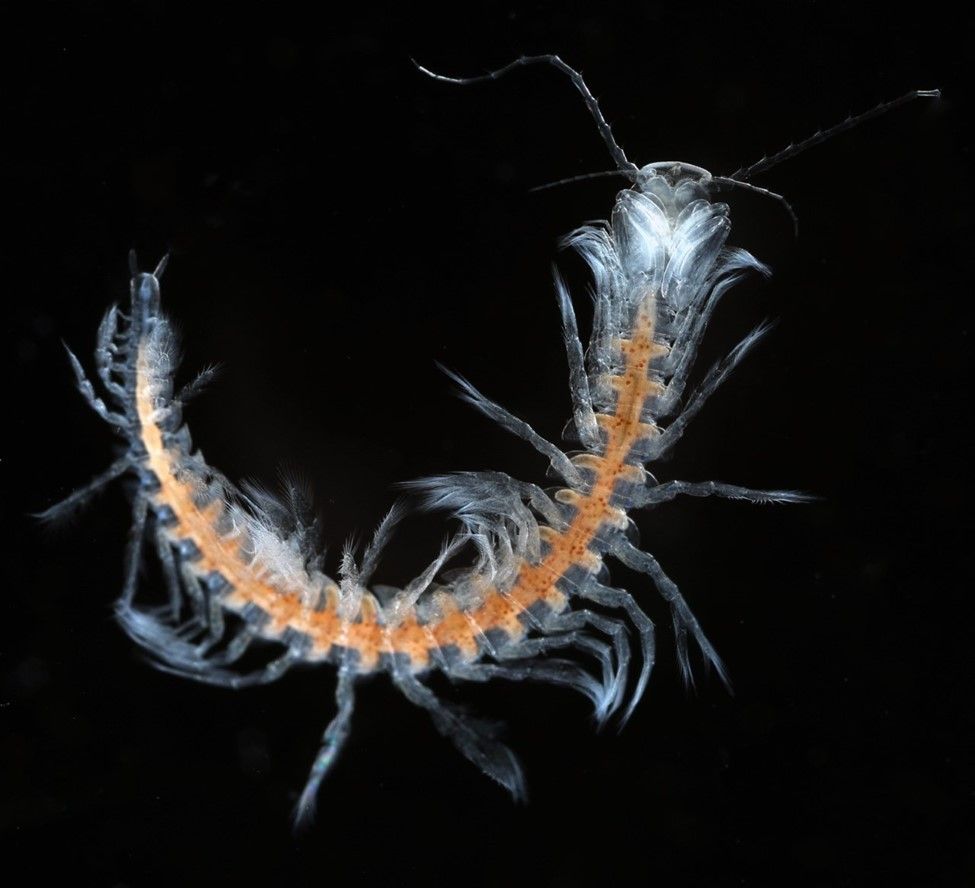NATIONAL MUSEUM OF NATURAL HISTORY
Scientists Brave One of the Darkest Places on Earth for Rare Predatory Worm
Smithsonian marine scientist Brett Gonzalez spent 10 days exploring the flooded caves of the Turks and Caicos in search of a rare predatory scale worm.
:focal(1470x1080:1471x1081)/https://tf-cmsv2-smithsonianmag-media.s3.amazonaws.com/blogging/featured/Dark_underground_cave.jpg)
In 1982, marine scientists from Texas A&M led an expedition to a series of underwater caves in the Turks and Caicos. They discovered a vibrant ecosystem teeming with life but what they didn’t expect to find in these shallow waters was a rare species of scale worm that was far removed from its deep-sea relatives. Why and how it got there remained a mystery.
Nearly 40 years later and armed with modern genetic technology, Smithsonian marine biologist Brett Gonzalez and his team revisited the caves to pick up where the original researchers left off. They spent 10 days exploring one of the darkest, most extreme environments on Earth to learn more about life in caves and this perplexing species of scale worm.
The watery underworlds of the Turks and Caicos

The dense jungle of the Turks and Caicos, with its rash-inducing flora, venomous spiders and bountiful mosquitos holds little threat when compared to the caves below. These watery underworlds are pitch-black, claustrophobia-inducing mazes to the unprepared.
“It’s the darkest place you’ve ever been in,” says Gonzalez. “So dark, you only know your hand is in front of your face because you’ve put it there.” To navigate the inky blackness, divers are aided by dive lights and carefully placed nylon guidelines mapping the way back to the cave’s only exit.
“Caves are unforgiving,” stresses Gonzalez. “Letting your guard down, even for a second, may spell certain disaster or death if you’re not prepared.

If the darkness weren’t bone-chilling enough, there is always the potential of getting stuck while exploring the tunnels and tight crevasses of the caves. And if the divers lose focus, their fins can kick up vision-blocking underwater silt-storms that make finding the way back to the surface nearly impossible.
But Gonzalez and his team carefully train for these perils. “When I’m in a cave, I don’t have to worry about the unknowns, like currents, storms or large predators as you would when diving in the open ocean,” says Gonzalez. “We plan and prepare for each dive, including worst case scenarios.”
Flooded evolutionary microcosms
Despite the dangers, scientists including Gonzalez continue to dedicate their careers to exploring these treacherous environments because they are home to species that help biologists better understand adaptation and evolution.
“Cave environments are essentially evolutionary microcosms,” explains Gonzalez. “They force noticeable changes in response to the demands of the habitat, making it easy to connect an animal’s adaptations to environmental pressures.”
Interestingly, some cave species show less adaptation than others, as if they are in an intermediate phase of their evolution. This transitional state is something rarely seen in other habitats.
The flooded caves of the Turks and Caicos are a prime example of how an extreme environment can force adaptation. To combat the lack of light, limited food supply and isolation of the caves, many of the inhabitants traded their sight for enhanced sensory appendages, developed extremely efficient ways to store calories and have become the perfect hunters for their limited prey.
The new mission
When Gonzalez and his team donned their wetsuits and dove into the submerged cave, they hoped to finally unravel several longstanding evolutionary questions about cave life that had been left largely unanswered since the 1982 expedition.

Gonzalez’s sought-after scale worm puzzled scientists since its discovery. Its closest known relatives are found thousands of meters below the ocean’s surface. Not in the shallow pools of a tropical cave.
“A lot of animals that live in these caves have their closest relatives in the deep sea, and share similar adaptations,” says Gonzalez. “I’m trying to understand how body plans, behavior and genetics change in response to these extreme environments.”
After 10 grueling days in the caves, Gonzalez found his scale worm. “It always seems to happen that way with field work, things come together at the last possible moment,” Gonzalez reminisces.
A fruitful endeavor
In addition to Gonzalez’s scale worm, the team brought back numerous samples of other animals, discovering several new species in the process.

Most excitingly, the researchers found a new species of a blind crustacean called a remipede which is only found in these types of caves. Using high-speed videography, the team captured swimming behavior of both scale worms and remipedes to compare locomotor mechanisms and efficiency of their paddle-like appendages.
This expedition contributed to a larger effort — the Global Genome Initiative — to catalog half of the globe’s genomic diversity by 2022. Specimens from this trip are preserved in the Smithsonian’s high-grade, genetic tissue collection, or Biorepository, and are available to scientists around the globe for study. They are a priceless record of life on Earth at a time when its ecosystems are undergoing drastic changes and many of these animals may soon be lost for good.
Related stories:
Discovery and Danger: The Shocking Fishes of the Amazon’s Final Frontier
Fish Detective Solves a Shocking Case of Mistaken Identity
Q&A: Sea Monsters in Our Ancient Oceans Were Strangely Familiar
Why Science Needs Art

